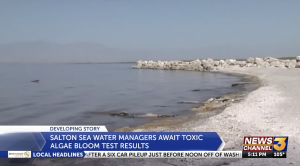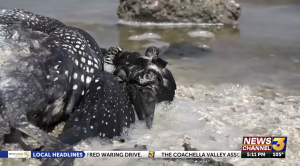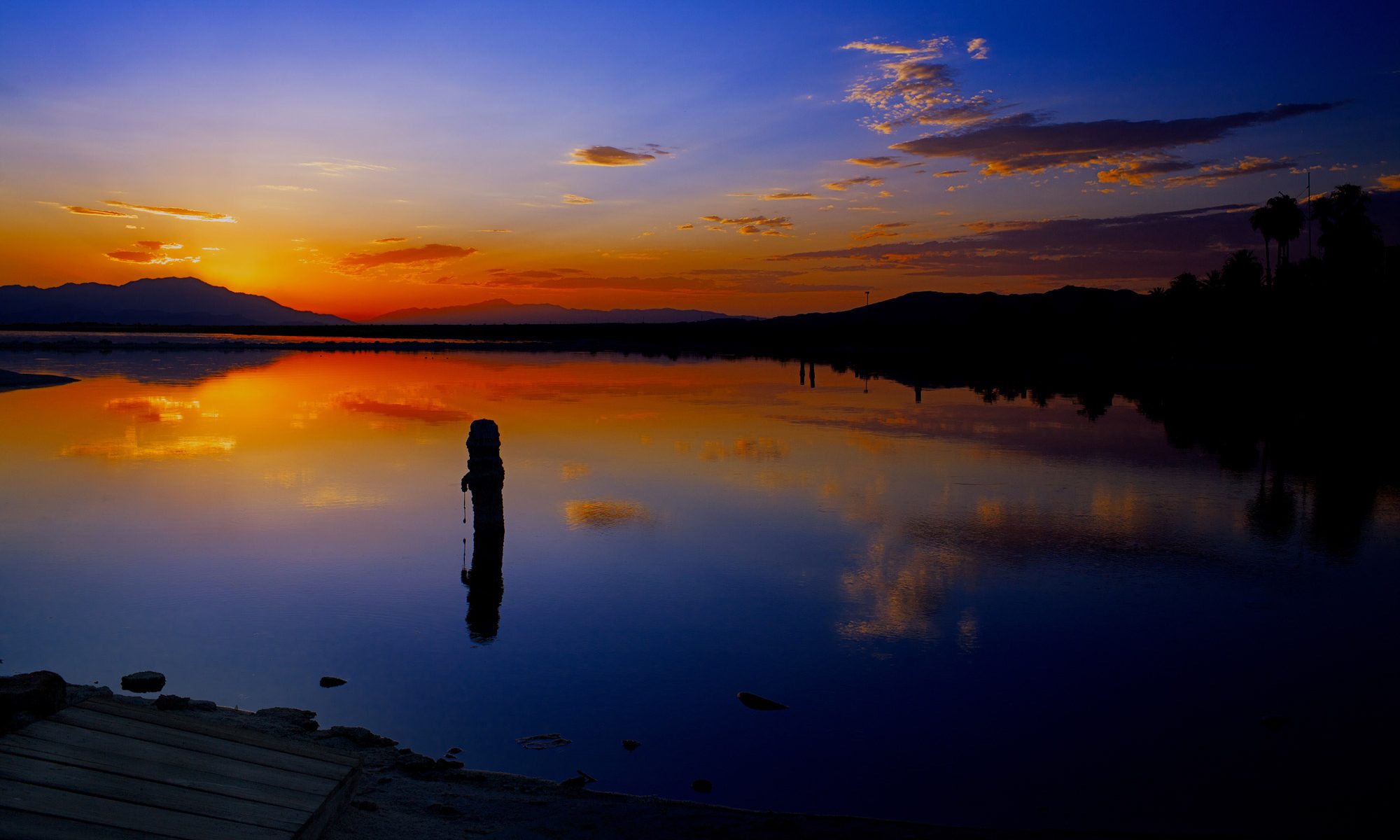SOURCE: News Channel 3 – kesq
As of today, it’s not clear if there’s a cause for concern over any toxic algae blooms at the Salton Sea.
The California State Water Resources Control Board has yet to release test results from samples submitted by Imperial County Environmental Health officials this week.
The state works with Riverside and Imperial counties to manage the Salton Sea, as the waterway spans across both counties.

As of June 30 2022, there were “no new observations made of the bloom for 30 days”, according to the State Water Resources Control Board.
The alert noted “observations of scum and surface accumulation of algal material present at this site indicating elevated health risk to humans and animals. Surface accumulations may become stranded along shoreline, children and dogs should avoid contact.”
It also noted “the exact location, extent and toxicity of the reported bloom may not be accurate and may not be affecting the entire waterbody,” therefore its recommended the waterbody manager be contacted for current conditions since “the bloom may still be present or may have subsided.”
County environmental officials partner with the state to help advise the public in the surrounding community if a toxic algae bloom is detected.

“The last time we posted signage was in mid-July, so the detection would’ve been the week prior,” said Vanessa Ramirez, Environmental Health Compliance Specialist for Imperial County.
However, unless testing is conducted, county officials don’t always know whether or not toxic algae is present at the Salton Sea. If a potential harmful algal bloom is observed and reported, then county officials will visit the site and conduct an investigation to make a determination.
Currently, the state water managers conduct what’s called holiday testing. “The state water board has a program for Memorial Day, July 4, and for Labor Day. Since we’re local, we’ll go out there on their behalf, do the sampling, and send the sample to the state” for testing, said Vanessa Ramirez, Environmental Health Compliance Specialist for Imperial County.
Depending on the level of danger determined, action is then taken to address the bloom. Those steps can range from putting up signs warning the public to closing waterways for recreational use.
Toxic algae blooms used to be more seasonal, but that’s no longer the case due to a variety of reasons, including warmer temperatures and California’s ongoing drought.
When water recedes, its allows for “an increase in nutrient activity in a particular area,” according to Jeff Lamoure, Deputy Director of Environmental Health for Imperial County.
“You see maybe a concentration of the Cyanotoxins in the water that causes them to bloom more frequently. You’re not having as much water movement because of the receding shorelines, so they’re kind of working together to causes these activities to increase,” added Lamoure.
Existing warnings for people to stay out of the water due to dangerous algae blooms in Lake Elsinore, in western Riverside County, and Big Bear Lake, in San Bernardino County, are prompting growing interest on the current status of algae blooms at the Salton Sea.
The lake, located in southern Riverside and northern Imperial counties, has had a history of toxic algae blooms in previous years.
Exposure to toxic algae blooms can cause severe illness among people and animals, and death among wildlife in some instances.
